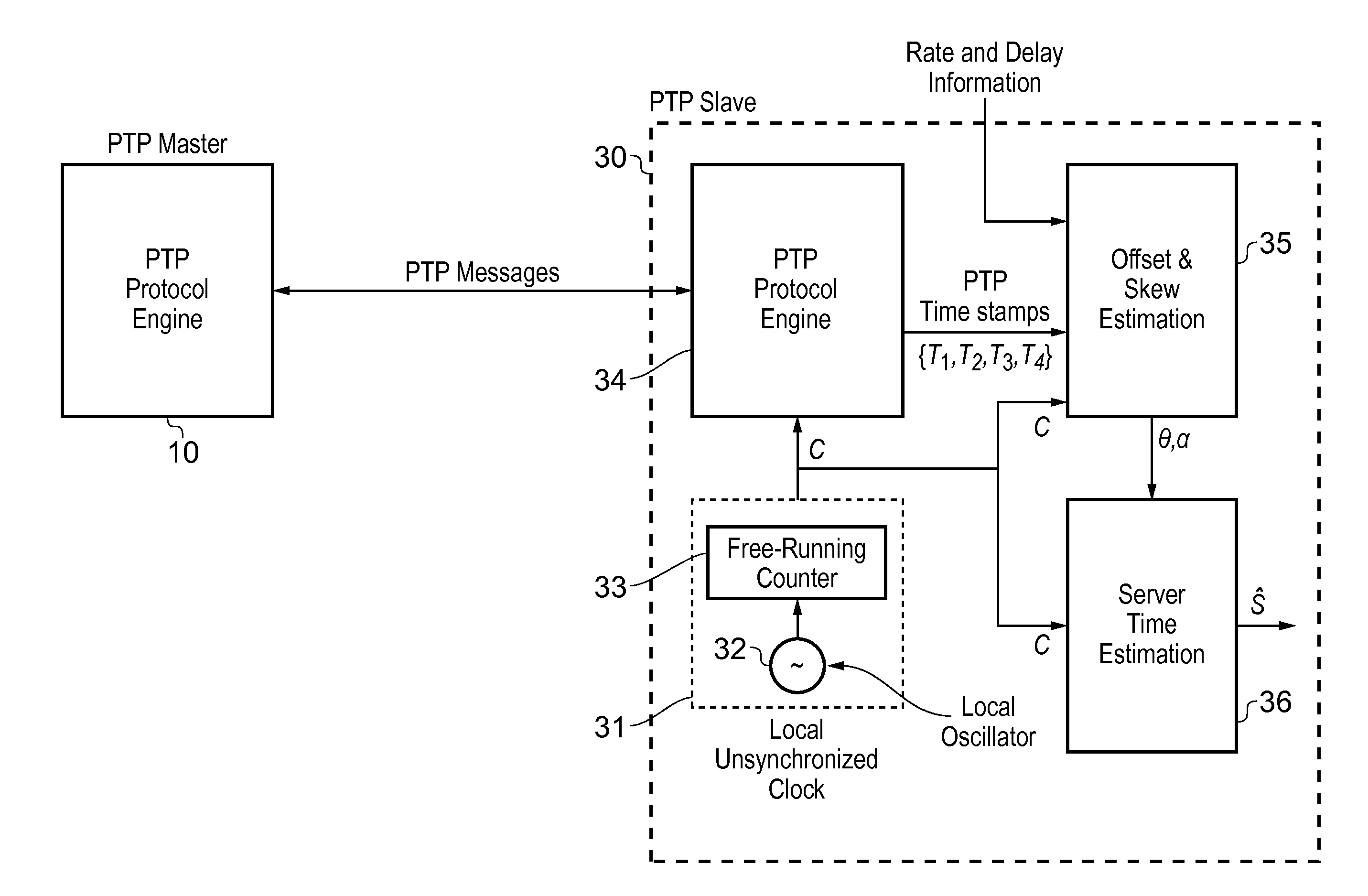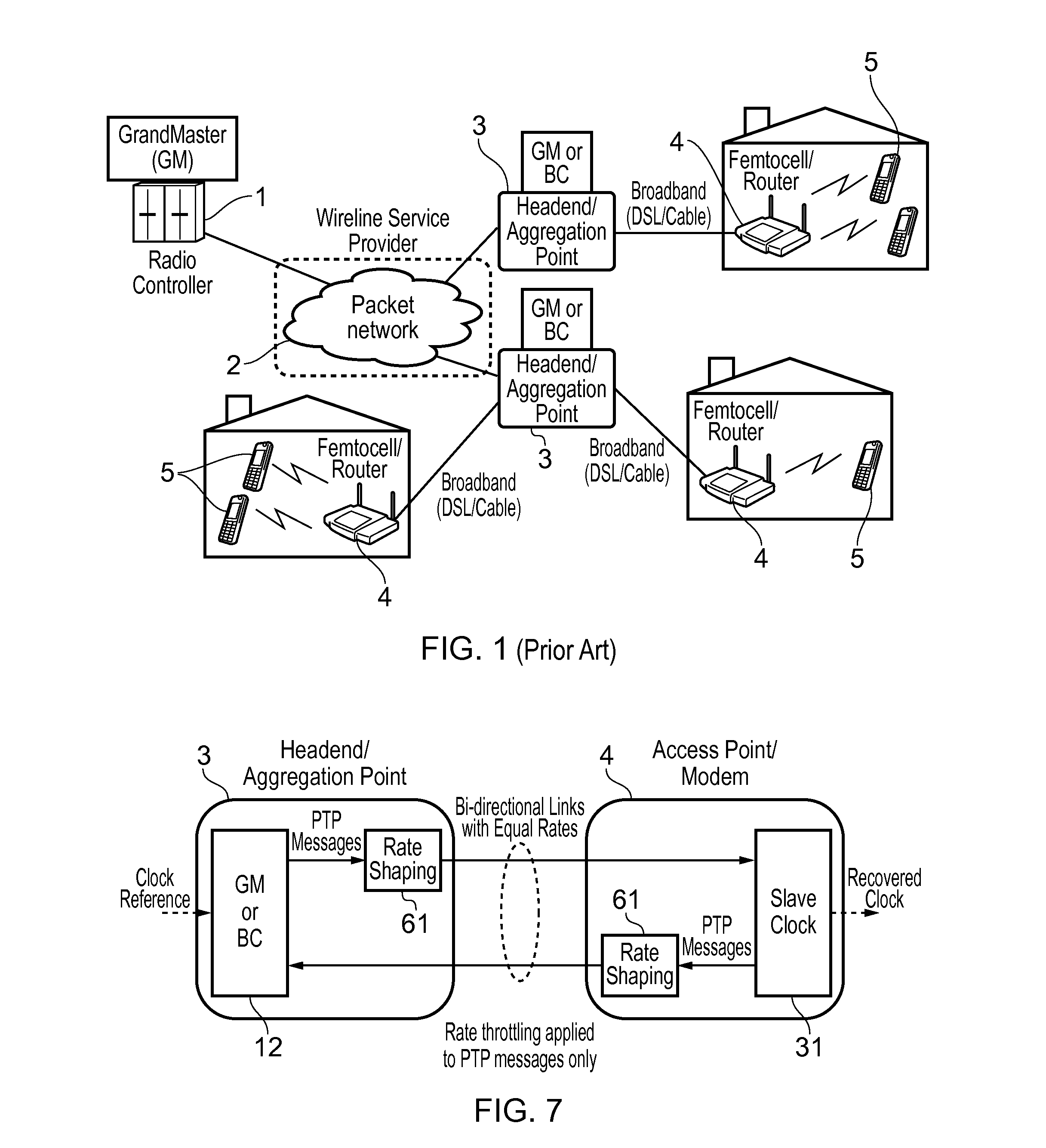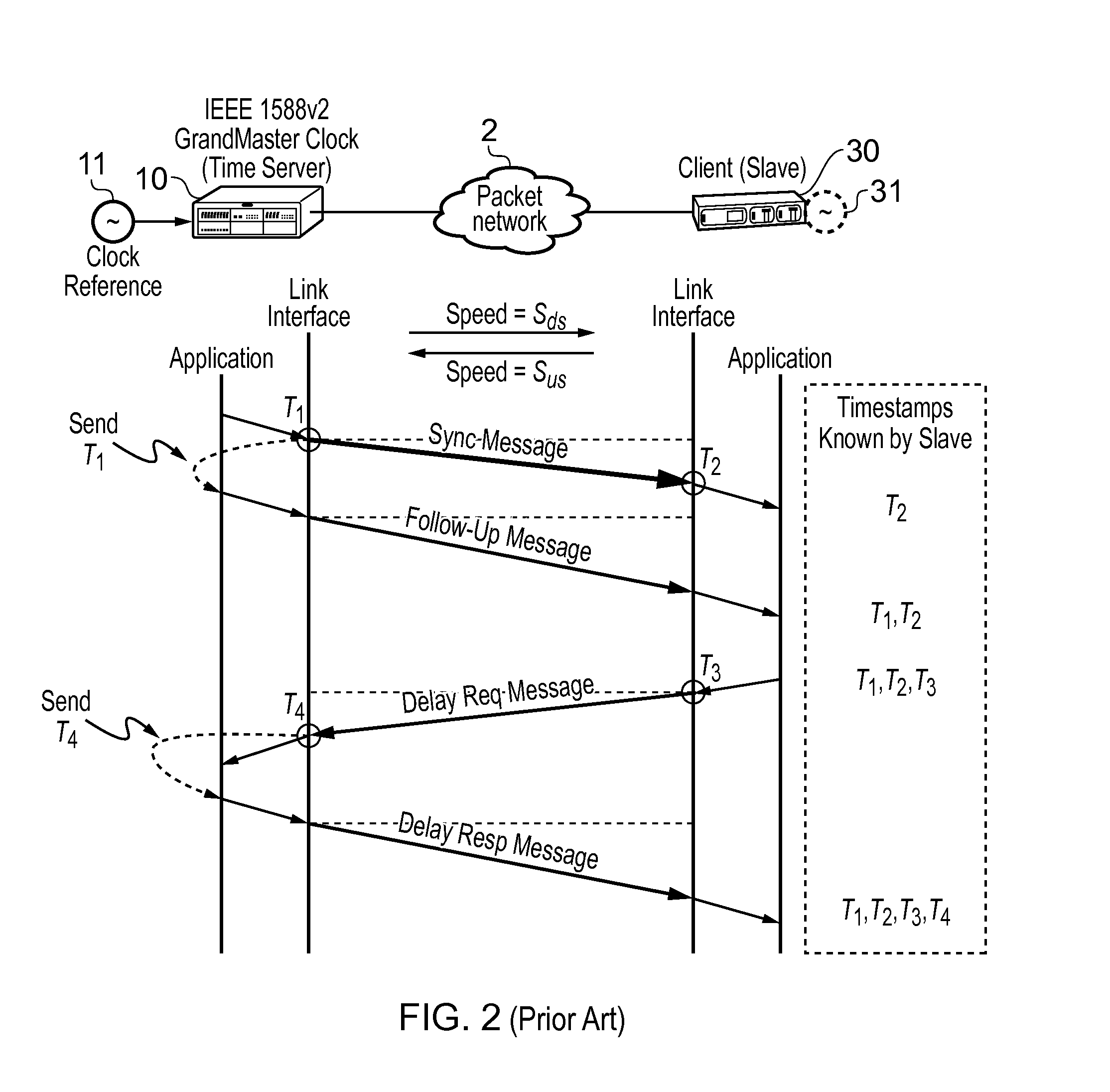Method and devices for clock synchronization over links with asymmetric transmission rates
a clock synchronization and transmission rate technology, applied in multiplex communication, generating/distributing signals, instruments, etc., can solve the problems of dropping calls during handover, increasing the initial installation process of the base station, and increasing the cost of antennas and wiring
- Summary
- Abstract
- Description
- Claims
- Application Information
AI Technical Summary
Benefits of technology
Problems solved by technology
Method used
Image
Examples
Embodiment Construction
[0041]At their broadest, a first set of aspects of the present invention provide for synchronization of a slave clock to a master clock over a network with asymmetric transmission rates wherein the synchronization takes account of the relative transmission rates in each direction.
[0042]A first aspect of the present invention provides a method of synchronising a slave clock in a slave device with a master clock in a master device, the master and slave device being connected by a network having asymmetric transmission rates, the method including the steps of: exchanging timing messages between the master device and the slave device over said network and recording timestamps which are the times of sending and receiving said messages; calculating or estimating the relative transmission rates of data from the master to the slave and vice-versa; calculating the skew and offset of the slave clock compared to the master clock using said timestamps and said transmission rates; and synchroniz...
PUM
 Login to View More
Login to View More Abstract
Description
Claims
Application Information
 Login to View More
Login to View More - R&D
- Intellectual Property
- Life Sciences
- Materials
- Tech Scout
- Unparalleled Data Quality
- Higher Quality Content
- 60% Fewer Hallucinations
Browse by: Latest US Patents, China's latest patents, Technical Efficacy Thesaurus, Application Domain, Technology Topic, Popular Technical Reports.
© 2025 PatSnap. All rights reserved.Legal|Privacy policy|Modern Slavery Act Transparency Statement|Sitemap|About US| Contact US: help@patsnap.com



